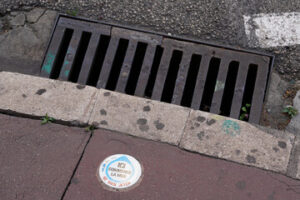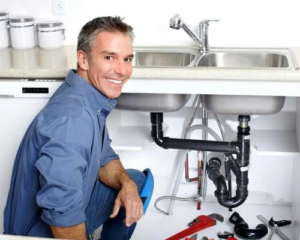French Drain Baltimore prevents hydrostatic pressure that can push against foundation walls and lead to bowed walls. They also keep water away from the home, which eliminates moisture problems that can cause rot or mold.

Start by identifying the problem area and choosing an exit point for the drainage system. Then, dig a trench that is at least 18 inches wide and deep to create a slope.
A French drain can help you deal with water accumulation issues like puddles and standing water. The drainage system uses a layer of gravel and perforated pipe to capture water, filter out sediment, and direct it toward a designated drainage area or sewer drain. The cost of a French drain depends on several factors including the type and size of pipe, location, and material. Other considerations include labor, excavation, and drainage accessories.
French drains work based on the science of gravity and water flow. To maximize their effectiveness, they must be installed in a trench that slopes downward. This ensures that gravity works in your favor, pulling the water down the incline and away from the home. For this reason, digging a trench for a French drain can be very expensive and may require the services of a professional landscaper.
The piping used in a French drain can be made from either corrugated or plastic PVC. The pipe must be perforated at regular intervals to allow water to enter and flow. The cost of the piping varies depending on the manufacturer, the type of soil it will be installed in, and the length and depth of the trench. In general, a 3″-to 4″ diameter pipe will be sufficient for most residential applications.
A sleeve, or “sock,” of non-woven geotextile fabric is often wrapped around the piping to keep dirt and weeds from entering the pipe and clogging it. The piping is then covered with a layer of crushed rock or washed gravel. This is an optional accessory that can increase the appearance of the French drain but does not increase its functionality.
Once the water reaches the sock, it is pumped away through an underground sump pump. The sump pump is a vital part of any French drainage system because it prevents clogs and flooding in the basement and lower level of the home. The costs of installing a sump pump can run anywhere from $500 to $3,500.
To prevent damage to buried utility lines, any contractor working on a French drain project must call your local utility locator service before starting the work. This is a requirement in most jurisdictions and is important to protect against unforeseen problems that can cost you thousands of dollars in repairs and replacement.
Installation
French drains can be installed by a professional, but they are also relatively easy for homeowners to do themselves. If you have the right equipment, you can complete this project in a day or two. However, the process can be more complex for properties with varying soil conditions or other landscaping obstacles. For this reason, many homeowners choose to hire a professional. This option can cost more, but it may save you time and money in the long run by avoiding costly repairs or drainage system failures.
The first step is to evaluate the problem area and plan a drainage route. Make sure to include a clear path toward a designated drainage area or sewer system. It’s also important to ensure that the trench’s drainage end or exit isn’t in a neighboring property, as this can create legal issues.
Once the route has been established, dig a trench that’s at least 18 inches deep and 9 inches wide. Before starting, check for buried utility lines and pipes with a ground-measuring tool. You should also double-check for zoning laws or homeowner association restrictions that prevent digging.
When the trench is completed, place a layer of gravel over it. This provides a layer of filtration for the pipe, preventing dirt and silt from clogging it up. Then, lay the perforated piping over the gravel, and cover it with more gravel until you’re five or six inches from the top of the trench. Finally, fold over the excess landscape fabric, which acts as a filtration barrier and helps the drainage area blend in with the rest of the yard.
To keep your French drain in good condition, you should regularly clean the surrounding area of debris, including leaves and branches. You should also inspect the piping for any blockages or other problems. For clogs within the pipe, you can use an electric snake to dislodge compacted soil and sediment that builds up around the weep holes. It’s important to note that rushing through the process could damage the drainpipe and cause other problems. To avoid this, take your time and use the snake gently.
Maintenance
A French Drain can help you manage excess water and protect your home’s foundation. However, like any system, it requires regular maintenance to perform well and remain effective over time. If you’re a homeowner, learning how to properly care for your French Drain can help ensure it continues to safeguard your property and keep your landscaping beautiful.
One of the most important things you can do is to schedule routine inspections of your French Drain to check for clogs and damage. Performing these inspections on a regular basis will allow you to catch problems before they become significant and costly. During an inspection, remove any debris that may have accumulated in or around the drain trench. It’s also a good idea to test the drain by pouring water into the drain trench and watching for proper drainage. If the drain is clogged, it’s best to call a professional plumber.
If your drain is clogged, you can usually get it back in working order by flushing out the perforated pipe. To do this, first locate the ground-level access point for the French drain (typically a grate sticking out above the ground or the end of a gutter downspout). Remove the cover and run a hose through it. Make sure to wear eye protection and rubber gloves and that the nozzle is set to low pressure before you try using it to clean out the pipe. If the clog persists, you’ll need to use a drain snake. Again, it’s best to call a plumber who has experience working with this type of high-pressure home improvement project.
You should also inspect the gravel layer in the drain trench on a regular basis to ensure that it’s evenly distributed and isn’t compacted. A properly installed gravel layer promotes water filtration and is essential to the proper functioning of your French Drain. Finally, it’s a good idea to regularly trim nearby trees to prevent them from sending roots into the drainage pipe. This can cause the pipe to change its pitch, develop cracks, or even separate from the ground.
Safety
A French drain creates a hidden path that takes water away from your basement. Its main purpose is to safeguard your home’s foundation from water infiltration, reducing the risk of cracks, mold, and other structural damage. It works by diverting excess water from the area around your house, channeling it away through a trench and perforated pipe, then downhill and into storm drains or other lower points on the property.
Before installing a French drain, your contractor should perform a utility check and gain any necessary permits. Failure to do so could result in costly complications. The drainage system should also be properly sloped, with a slight downward gradient. Otherwise, it won’t be able to take in as much water as it should.
In order to maintain its efficiency, a French drain needs to be free of debris and clogs. A clogged drain is not only unsightly, but it can lead to serious structural problems for your home. To avoid this, you should regularly inspect and clean your drain.
The first step is to locate the ground-level access point for your French drain. This is usually a grate that sticks up above the surface, or a fitting at the end of a gutter downspout. Next, remove the grate or cap and run a hose down the pipe to test for clogs or water flow. If the hose can’t reach the bottom of the pipe, it means that the clog is deeper and more difficult to resolve.
If you notice that your French drain is clogged, it’s important to take care of the problem immediately. The clog may be caused by a buildup of dirt or gravel, which can block the perforations in the pipe and prevent water from flowing through. A drain snake can help break up and disperse these materials.
In addition to clogs, another common issue with French drains is compacted soil. This can push down against the pipe, restricting its functionality and causing it to leak or flood. To avoid this, you should regularly inspect your yard and make sure that the drain isn’t being blocked by any obstacles, including landscaping, patios, driveways, or fences.
